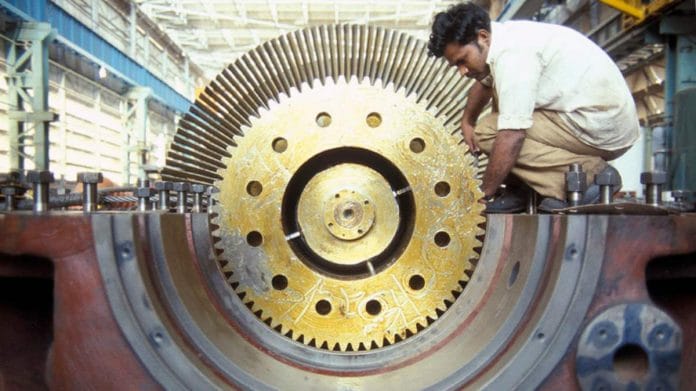New Delhi: With India consistently reporting record fresh Covid-19 cases this month, the country’s growth prospects for 2021-22 appear to be dimming again as the virus takes a toll on economic activity.
The surge in cases and the resultant lockdowns announced in many states has adversely impacted economic activity as reflected by the different mobility indicators like traffic congestion and retail mobility, leading to a downward revision in India’s growth forecasts for the year.
This comes just a week after the International Monetary Fund (IMF) raised India’s growth forecasts to 12.5 per cent for 2021-22 from its earlier January forecast of 11.5 per cent. Many other international rating agencies like Fitch Ratings, Moody’s and S&P had also raised India’s growth forecasts over the last few weeks.
But a lot has changed over the last one week. India has been reporting record Covid infections almost daily — around 1.7 lakh Monday — prompting state governments to take drastic steps like partial lockdowns, restrictions on gatherings and night curfews as it seeks to contain the fast-spreading virus.
On Monday, global financial services firm Nomura slashed India’s growth forecast for 2021 by nearly one percentage point to 11.5 per cent from its earlier forecast of 12.4 per cent citing risks to India’s recovery from the fresh Covid wave. It pointed out that while recovery is still not fully secured, the economy has comparatively lesser capacity to handle major shocks.
Goldman Sachs had also lowered India’s growth forecast for the April-June quarter by more than 2 percentage points to 31.3 per cent last week.
Also read: Retail inflation climbs to 5.52% in March, Industrial production contracts 3.6% in February
Some activity could be unaffected
In a 12 April note, Barclays India chief economist Rahul Bajoria pointed out that the economic cost of the latest shutdowns is around Rs 8,000 crore ($1.25 billion) per week. He pointed out that if the current restrictions stay in place for two months, the impact on the real GDP could be nearly 0.2 percentage points.
“Almost 60% of India’s economy is now subject to some mobility restrictions. Economic hubs such as Maharashtra, Gujarat, Tamil Nadu and Rajasthan are seeing rising Covid-19 cases and falling mobility. However, despite some restrictions on mobility, which are likely to mostly impact discretionary high contact services, we believe that activity levels in the manufacturing, financial services, agriculture and construction sectors are likely to be largely unaffected,” he said.
Bajoria estimated that if the current restrictions remain in place until the end of May, the cumulative loss of activity could amount to around Rs 75,000 crore ($10.5 billion) or 0.34 percentage points of annual nominal GDP.
However, the impact on the first quarter could be around 1.4 percentage points, he said, adding that the 11 per cent GDP growth for full year is being retained for now.
Last week, Reserve Bank of India Governor Shaktikanta Das had also warned about the risk of the second wave delaying India’s return to normalcy. He had said lockdowns could dampen the recovery seen in demand conditions and add uncertainty to the domestic growth outlook.
The RBI had, however, retained the growth outlook for the next fiscal at 10.5 per cent.
The Economic Survey 2021-22 presented in January had forecast the Indian economy to grow at 11 per cent but finance ministry officials have stated how these numbers are conservative and the economy could grow at a much higher pace.
Retail mobility starting to stutter
Crisil Ratings, in a note dated 12 April, said retail mobility and traffic congestion — rough proxies for tracking economic activity — have been adversely impacted over the last few weeks.
“All-India level retail mobility is starting to stutter: It grew by a marginal 0.7 percentage points (pp) in the last week, driven by the restrictions on movement introduced in Maharashtra, Punjab, Gujarat and Madhya Pradesh. Maharashtra saw the highest fall in retail mobility among these states, by 5.2 pp,” it said.
“The traffic congestion index for major cities in some of the hardest-hit states — Mumbai (Maharashtra), Bengaluru (Karnataka), and Ahmedabad (Gujarat) — has nosedived in the past few weeks, and is winding back towards levels seen during the nationwide lockdown last April,” it added.
Also read: India sees job losses as curbs return to check new Covid wave, urban areas severely hit







Yeah sure. Economy will need an excuse anyway. What else could be more honest???